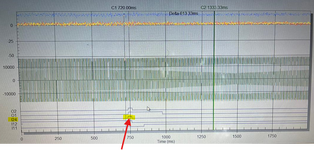Emad Shaaban
Electrical
- Jun 26, 2017
- 14
The Transformer feeders in our plant are running by Sepam T40s at both primary and secondary sides.
During the last 8 years we encountered issues that happened quite several times ,in which the Sepam of Primary record an external trip and open its SWG..
This configured external trip input is triggered by low side Sepam output ,which is activated by earth fault.
The confusion is that the low side Sepam has NOT any evidence of fault ..
We have done all of functional tests for both Sepam and all are as required.
Furthermore, one of these incidents included more than 10 Sepam to trip with same faults in the same time with out a real faults recorded by the down stream sides .
The only doubts we have have are these faults are because of feedback cable interference voltages ..
But this still illogic because it happens with number of feeders going to different substitutions
Does any body have other explanations?
How can we properly proof or test if cable interference is the reason ,considering that it’s a sudden issue not repeated ?
During the last 8 years we encountered issues that happened quite several times ,in which the Sepam of Primary record an external trip and open its SWG..
This configured external trip input is triggered by low side Sepam output ,which is activated by earth fault.
The confusion is that the low side Sepam has NOT any evidence of fault ..
We have done all of functional tests for both Sepam and all are as required.
Furthermore, one of these incidents included more than 10 Sepam to trip with same faults in the same time with out a real faults recorded by the down stream sides .
The only doubts we have have are these faults are because of feedback cable interference voltages ..
But this still illogic because it happens with number of feeders going to different substitutions
Does any body have other explanations?
How can we properly proof or test if cable interference is the reason ,considering that it’s a sudden issue not repeated ?

